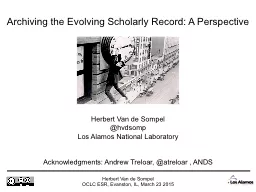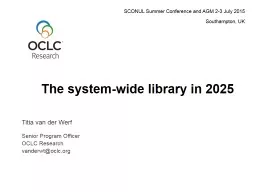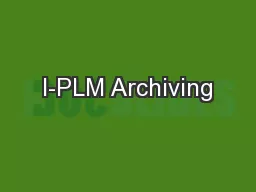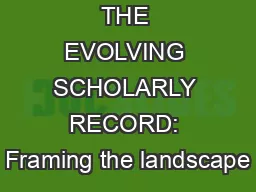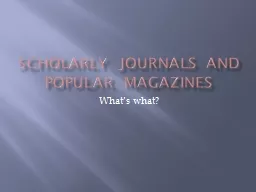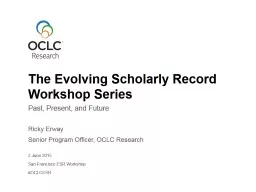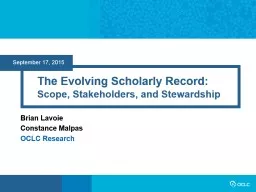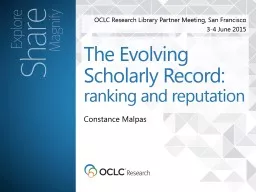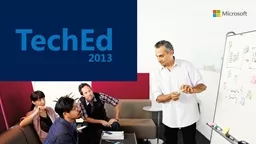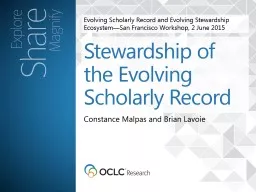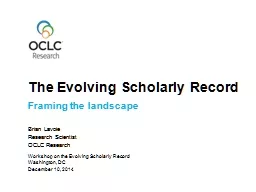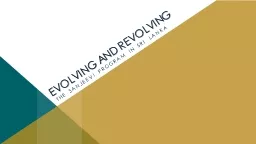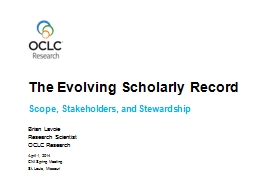PPT-Archiving the Evolving Scholarly Record: A Perspective
Author : pamella-moone | Published Date : 2015-12-03
Herbert Van de Sompel hvdsomp Los Alamos National Laboratory Acknowledgments Andrew Treloar atreloar ANDS In This Talk Functions of scholarly communication
Presentation Embed Code
Download Presentation
Download Presentation The PPT/PDF document "Archiving the Evolving Scholarly Record:..." is the property of its rightful owner. Permission is granted to download and print the materials on this website for personal, non-commercial use only, and to display it on your personal computer provided you do not modify the materials and that you retain all copyright notices contained in the materials. By downloading content from our website, you accept the terms of this agreement.
Archiving the Evolving Scholarly Record: A Perspective: Transcript
Download Rules Of Document
"Archiving the Evolving Scholarly Record: A Perspective"The content belongs to its owner. You may download and print it for personal use, without modification, and keep all copyright notices. By downloading, you agree to these terms.
Related Documents

